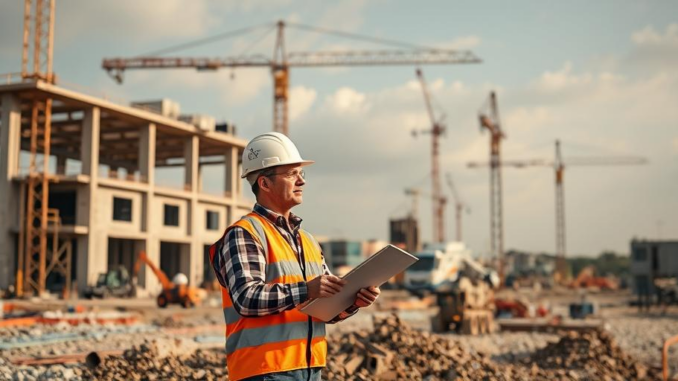
Summary
This article provides a comprehensive guide to maximizing energy efficiency in new building construction. It outlines key strategies, from initial design phases to incorporating smart technologies and renewable energy sources. By following these best practices, builders can create sustainable structures that minimize environmental impact and reduce long-term operational costs, benefiting both building owners and occupants.
Successful low-energy building design hinges on careful planning. Focus360 Energy can help.
** Main Story**
Alright, let’s talk about making new buildings really energy efficient. It’s not just about being green; it seriously impacts the bottom line, too. We’re talking lower bills, a smaller carbon footprint – it’s a win-win, right? So, here’s how to make it happen, step by step.
Starting Smart: Design is Key
Honestly, the biggest mistake I see is treating energy efficiency as an afterthought. You’ve got to bake it into the design from day one. Think about how the building sits on the land. Which way does it face? Where should the windows go? Natural light and ventilation are your friends; use them! It’s way cheaper to plan this stuff in than to try and retrofit later. I saw this once where a company, didn’t think about the sunlight and just put in massive AC units, that needed replacing after a couple of years.
Teamwork Makes the Dream Work
Seriously, get everyone on board – architects, engineers, contractors – everyone. An integrated design approach is crucial. It’s not just about slapping on solar panels; it’s about how all the systems work together. When you have everyone communicating from the get-go, you avoid those costly surprises down the line, and you optimize every aspect of the building’s energy use. Plus, less maintenance in the long run is always a good thing.
Building Envelope: Your First Line of Defense
Think of the building envelope – walls, roof, foundation – as a giant cozy blanket. You want that blanket to be thick and well-insulated. High-quality insulation is non-negotiable, and don’t skimp. Air leaks are energy vampires; seal ’em up! Invest in airtight construction around windows and doors. On the other hand, thick walls made of materials like concrete or brick act as natural insulators, regulating the internal temperature and reducing the load on the heating and cooling systems. You can really feel the difference when you walk into a well-insulated building; it just feels…comfortable, you know?
Let the Sunshine In (Smartly)
Maximize that natural light! Strategic window placement can slash your lighting bills. But, you don’t want to turn the place into a greenhouse, right? Think about shading devices like overhangs and awnings. Light-colored roofing materials can also reflect heat, helping you keep cool without cranking up the AC. Basically, you’re working with the sun, not against it.
HVAC: Efficiency is King
Look, sometimes you need mechanical heating and cooling. That’s fine, but choose high-efficiency HVAC systems. Smart thermostats are a must. And, regularly maintain these systems, cleaning or replacing filters as a priority. Consider heat recovery ventilators, too. They use outgoing air to pre-heat or pre-cool incoming air. Smart, right?
Lighting: Embrace the LED Revolution
Seriously, if you’re not using LEDs, what are you waiting for? They use way less energy than traditional bulbs, and they last forever. I mean, it’s almost set-and-forget. Integrate occupancy sensors and daylight harvesting controls to automatically adjust lighting levels. No need to light up empty rooms, right?
Smart Building Tech: The Brains of the Operation
Building management systems (BMS) are total game-changers. These systems monitor and control everything, giving you real-time data on energy consumption. You can then make informed decisions about how to optimize performance. Automate lighting, HVAC – everything you can. It’s like having a personal energy manager.
Go Green: Embrace Renewables
If you can, incorporate renewable energy sources like solar PV panels or even small wind turbines. On-site generation reduces your reliance on the grid. If structural changes aren’t in the cards, consider sourcing electricity from renewable energy providers. Every little bit helps. I mean, it’s a small thing that can make a big difference, right?
Commissioning: Don’t Skip This Step!
Thorough commissioning is absolutely vital. This verifies that everything is working as it should: HVAC, lighting, all the systems. It’s like a final quality control check to ensure you’re getting the energy performance you expected.
Culture of Conservation
Finally, get the occupants on board. Educate them about energy-saving habits. Clear guidelines are necessary. Promote a culture of sustainability within the building. What’s the point of having all this fancy tech if people leave the lights on all the time?
So, there you have it. Following these steps, you can create buildings that are not only environmentally friendly but also cost-effective in the long run. And hey, who doesn’t want to save some money, right?


The emphasis on integrated design is spot on. Thinking about the building’s orientation and natural light from the outset can drastically reduce reliance on artificial systems. I wonder how many projects miss these fundamental considerations due to budget or timeline pressures?
Great point about budget and timeline pressures! It’s true that those factors can often derail even the best-laid plans for integrated design. Maybe we need to start framing energy efficiency as a way to *save* money and time in the long run. How can we better communicate those long term benefits?
Editor: FocusNews.Uk
Thank you to our Sponsor Focus 360 Energy